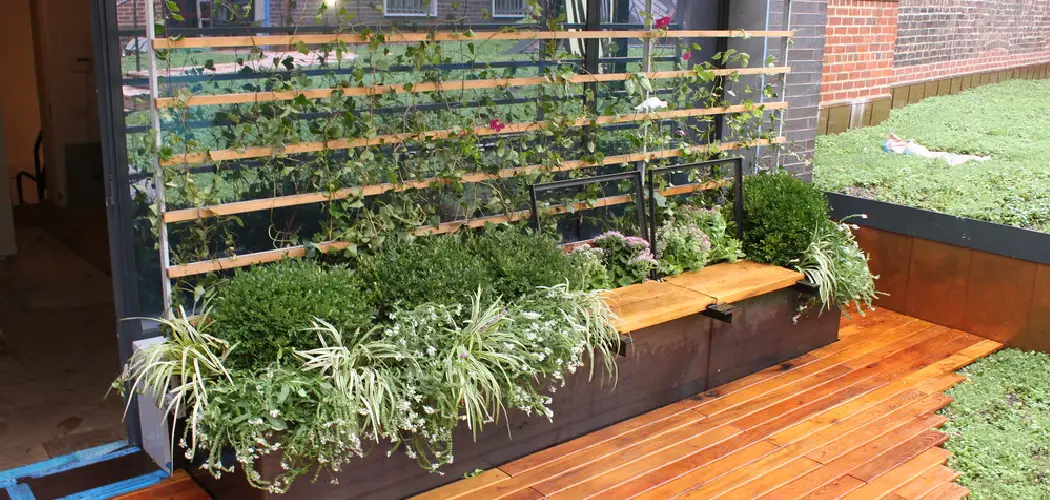Placing planters on your deck can bring life and beauty to your outdoor space, creating a vibrant, lush environment. However, while deck planters add aesthetic appeal, they can also pose challenges in terms of deck protection. Without proper precautions, these containers can lead to moisture damage, discoloration, and even structural issues.
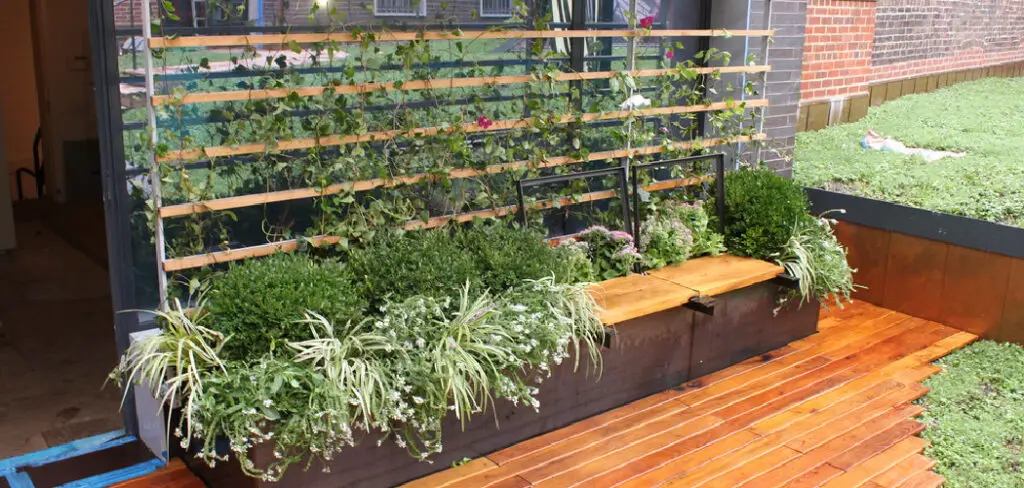
To ensure that your deck remains not only a botanical oasis but also a safe and durable part of your home, it’s essential to learn how to protect it from the potential hazards of planters. In this article, we’ll explore how to protect deck from planters. From choosing the right planter materials to implementing drainage solutions and maintenance routines, we’ll equip you with the knowledge and techniques you need to enjoy the beauty of deck planters without compromising the integrity and longevity of your outdoor living space.
The Importance of Safeguarding Your Deck’s Structural Integrity and Aesthetics
A deck is a great addition to your home, providing you with more living space and a place to kick back and enjoy the great outdoors. However, it is important to protect your deck from potential damage, especially from planters. Planters may seem harmless, but they can actually cause significant harm to your deck if not properly taken care of.
Why Planters Can Be Harmful to Your Deck
Planters are containers used for holding plants. They can be made of various materials such as wood, plastic, or ceramic. While they may seem harmless, planters can actually cause damage to your deck in several ways:
- Moisture Damage: If planters are not properly sealed or have drainage holes, they can cause moisture to accumulate on your deck’s surface. This excess moisture can lead to rot and decay of the wood, causing structural damage.
- Scratches and Stains: Planters can scratch and stain your deck’s surface if not placed carefully. This can not only affect the appearance of your deck but also compromise its structural integrity.
- Pest Infestation: Planters provide a cozy and moist environment for pests to thrive, such as termites or carpenter ants. These pests can cause significant damage to your deck’s wood and may even spread to other areas of your home.
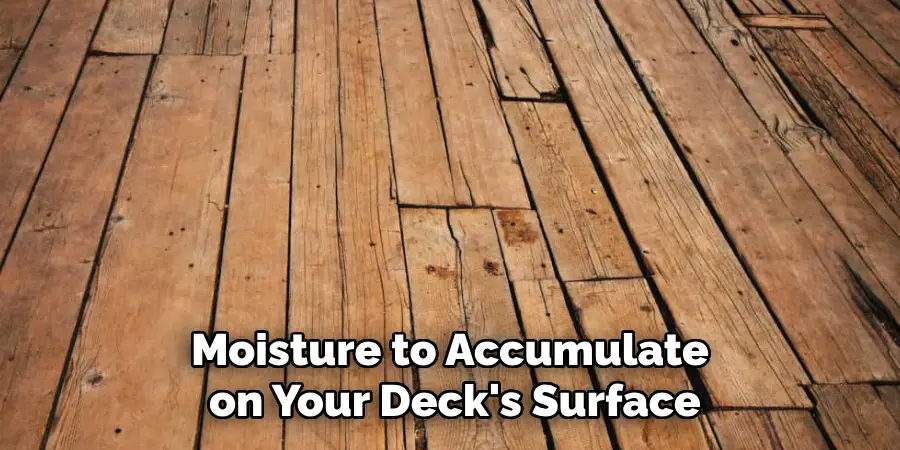
10 Methods How to Protect Deck from Planters
1. Place the Planter on a Stand
One of the best ways to protect your deck from planters is to place them on a stand. This will ensure that your planters are not directly in contact with the deck and will prevent water from pooling underneath them and causing damage.
Additionally, using a stand can help to provide better drainage for the plants, which can help keep them healthy and thriving.
2. Use Coasters
Using coasters underneath planters can also help to protect your deck from water damage. Coasters are designed to absorb any excess moisture that may be released by the plants, preventing it from seeping into the wood and causing it to rot or warp over time.
Make sure to choose coasters that are large enough for your planters so that they can adequately absorb any moisture.
3. Line the Bottom of the Planters with Rocks
Another way to protect your deck from planters is to line the bottom of each one with rocks or pebbles before you fill it with soil. This will create an extra layer between the soil and your deck, helping to prevent water from seeping through and causing damage over time.
It’s important to make sure that you use rocks or pebbles that have been washed first, as dirt particles could still cause staining if they come in contact with your deck surface.
4. Use Self-Watering Planters
Self-watering planters are an excellent way to protect your deck from water damage caused by overwatering plants. These types of planters have a reservoir at the bottom that stores excess water until it’s needed by the plants, ensuring that they don’t get overwatered and reducing the amount of runoff onto your deck surface.
5. Place Plastic Underneath Planters
Placing plastic sheets or tarps under planters is another great way to protect your deck from water damage caused by overwatering plants or other sources such as rain or snow melting off nearby trees.
The plastic will act as an extra barrier between the soil and your deck surface, helping to keep it dry and preventing any staining or warping over time.
6. Use Waterproof Sealant on Deck Surface
Applying a waterproof sealant onto your deck surface is another effective way to protect it against water damage caused by planters or other sources such as rain or snow melting off nearby trees. This sealant forms a protective barrier over the top of your existing finish, helping to repel any moisture away before it has a chance to penetrate into the wood fibers below and cause rot or warping over time.
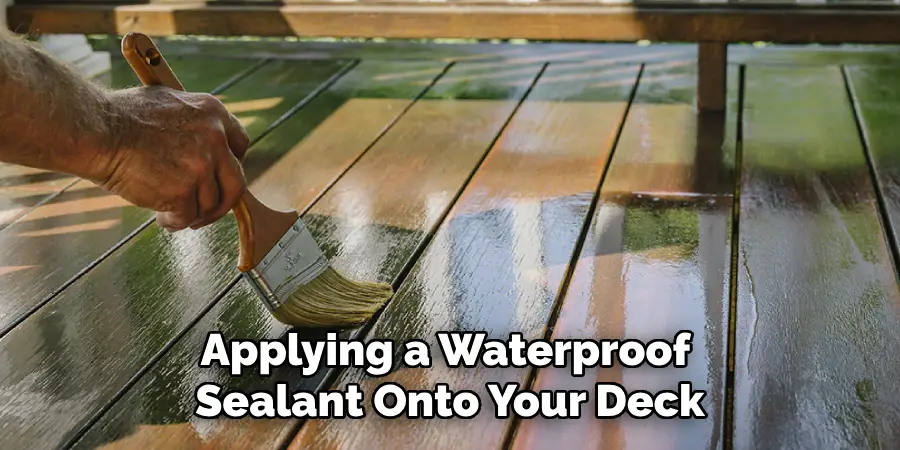
Make sure you choose a sealant specifically designed for outdoor use so that it stands up against harsh weather conditions like wind, rain, hail, snow, etc.
7. Elevate Your Deck Surface
If possible, try elevating your deck surface slightly so that there is more space between it and any nearby planter beds where water may collect after heavy rains or during snow melts off trees in winter months. This will help reduce runoff onto your existing finish while still allowing airflow under each bed for proper drainage.
You can do this either by installing posts around each bed area then adding boards across them for support. Alternatively, you could also build up each bed area slightly using additional soil mix, then add mulch around each bed for added protection.
8. Install Gutter Systems Around Each Bed Area
Installing gutter systems around each bed area is another great way to protect your existing finish against water damage caused by runoff from nearby plantings during heavy rains.

The gutters should be installed along each side of every bed at least six inches away and then connected together near one end so all collected runoff flows into one main drain pipe located away from the deckside. This will allow all collected runoff to be directed away quickly without damaging deckside surfaces.
9. Cover Existing Finish During Rainy Seasons
Covering existing finishes with tarps during rainy seasons is another good method used when protecting deck sides against water damage caused by nearby plantings during heavy rains.
Tarps should be placed securely across entire deckside areas prior to their installation and then removed once storms pass through. This will ensure no extra moisture gets trapped underneath tarps while still providing the necessary protection needed during storms.
10. Regularly Clean & Inspect Deck Surfaces
Last but not least, regularly cleaning & inspecting deckside surfaces is also important when protecting them against potential damages caused by nearby plantings .. Cleaning should involve removing dirt & debris buildup using appropriate cleaners specifically designed for outdoor use..
Also, be sure to inspect deckside surfaces for any signs of water damage or other potential problems such as cracks, warping, mold growth, etc. Catching these issues early on can help prevent further damage and save you time and money in the long run.
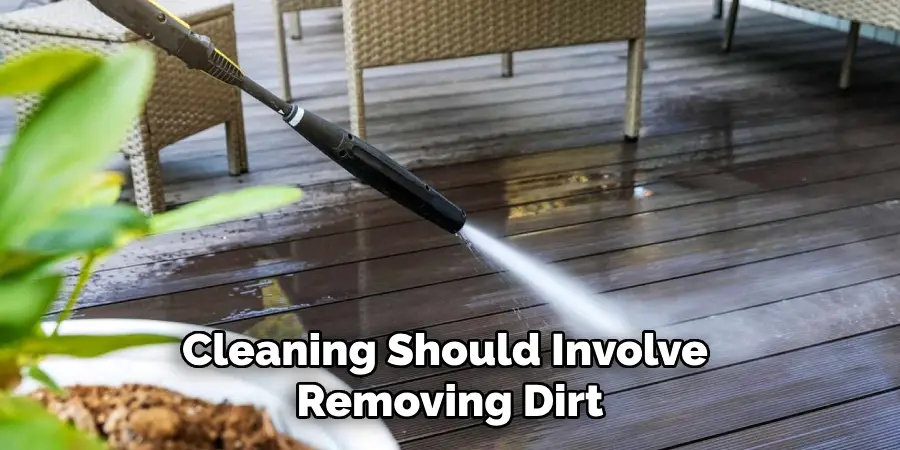
Things to Consider When Protecting Your Deck From Planters
Planters have become increasingly popular in the world of gardening, and for good reason. They can add a touch of beauty to any outdoor space and allow you to grow your own plants, herbs or even vegetables.
Weight and Size of the Planters
The first thing that needs to be taken into consideration is the weight and size of the planters you plan on placing on your deck. Planters can vary in weight, depending on their material and size. Some may be lightweight and easy to move around, while others can be quite heavy and difficult to maneuver.
Material of the Planters
The material of the planters is also crucial when it comes to protecting your deck. Some materials, such as terracotta or ceramic, can absorb moisture and cause damage to your deck over time. It’s best to avoid these materials and opt for planters made of plastic, metal or wood instead. These materials are less likely to cause moisture damage and can also be easily moved around if needed.
Drainage
Proper drainage is essential when it comes to protecting your deck from planters. Without proper drainage, excess water can accumulate and seep into the wood, causing rot and damage. Make sure your planters have holes at the bottom for water to drain out, and consider using a saucer or tray underneath to catch any excess water.
Conclusion
By following these simple steps, you can enjoy the beauty of your deck and keep it safe from planter stains. Building a durable barrier by using waterproof sealers or sheet-metal shields is one of the most effective methods of protection for any deck.
You should also inspect planters regularly and ensure that they are in good condition and well-maintained. With proper deck maintenance, you can enjoy all the colors and benefits that your outdoor living space has to offer
So go ahead, pick up some supplies, get to work, and start enjoying your outdoor space in style while keeping it safe and protected from planters and other forms of damage. It’s worth the effort! Now what are you waiting for? Follow these steps about how to protect deck from planters today to get started!
About
Outdoor Fixes is a distinguished figure in the world of Diy design, with a decade of expertise creating innovative and sustainable Diy solutions.
His professional focus lies in merging traditional craftsmanship with modern manufacturing techniques,
fostering designs that are both practical and environmentally conscious. As the author of diy,
outdoorfixes delves into the art and science of outdoorfixes-making, inspiring artisans and industry professionals alike.
Education RMIT University
(Melbourne, Australia) Associate Degree in Design (Outdoor Fixes) Focus on sustainable design, industry-driven projects,
and practical craftsmanship. Gained hands-on experience with traditional and digital manufacturing tools, such as CAD and CNC software.
Nottingham Trent University
(United Kingdom) Bachelor’s in outdoorfixes.com and Product Design (Honors) Specialized in product design with a focus on blending creativity with production
techniques. Participated in industry projects, working with companies like John Lewis and Vitsoe to gain real-world insights.
Publications and Impact
In diy, Outdoor Fixes his insights on indoor design processes, materials, and strategies for efficient production.
His writing bridges the gap between artisan knowledge and modern industry needs, making it a must-read for both budding designers and seasoned professionals.

